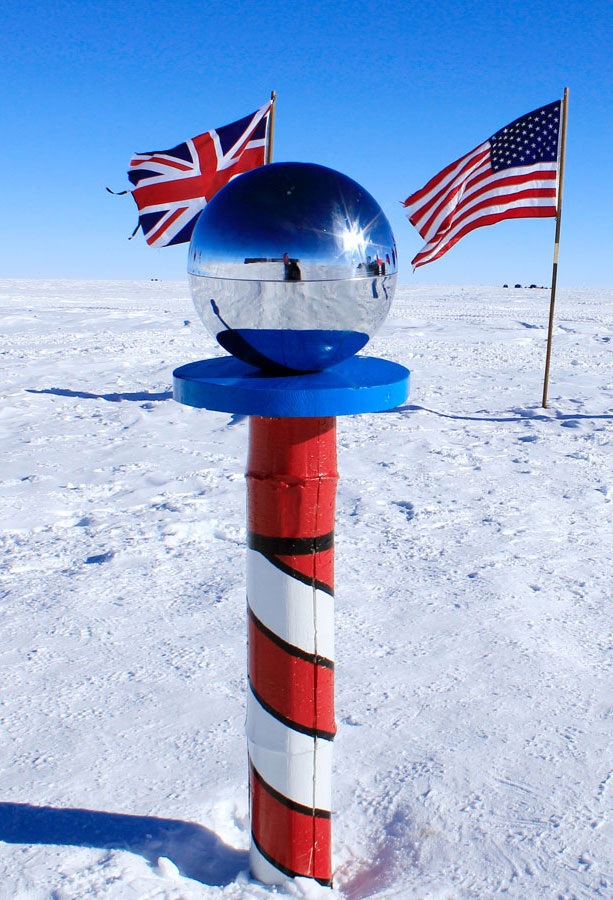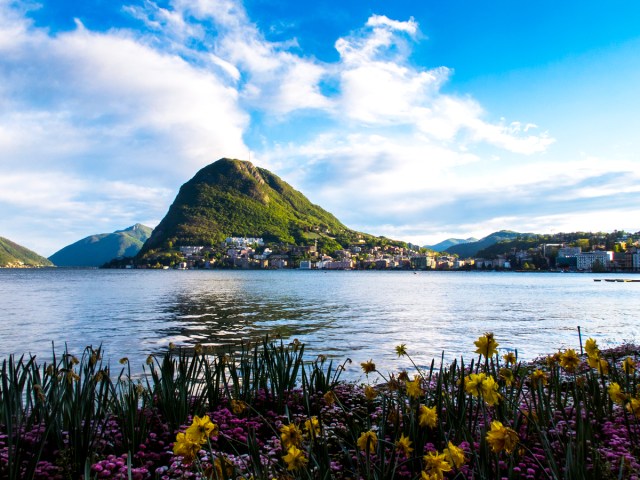Sitting at opposite ends of Earth, the North Pole and South Pole are two of the coldest and most isolated locations on the planet. The North Pole is an icy expanse incapable of supporting human life (no, not even Santa Claus), while the South Pole is home to a handful of temporary residents and scientific research buildings. Have you ever wondered what is actually at the North Pole and the South Pole? Find out everything you ever wanted to know below.
The North Pole Is Made Entirely of Ice
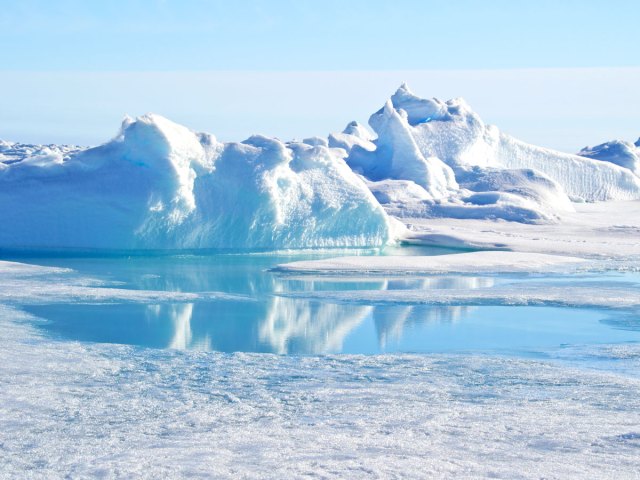
The North Pole sits squarely in the center of the Arctic Ocean, Earth’s smallest ocean, at 90°N latitude. Contrary to what you might think, there’s actually no permanent landmass at this spot — in fact, the nearest land is located approximately 450 miles away in northern Greenland. The closest inhabited region, located 508 miles away, is the military base in Alert, in Canada’s Nunavut territory. Home to around 55 people, it is the northernmost continuously inhabited place in the world.
In lieu of any firmly entrenched land, the North Pole is almost always covered with a six- to 10-foot-thick layer of ice. The ice separates the surface from the ocean floor, which is located a staggering 13,123 feet below sea level. The seabed is home to the only permanent fixture located at the North Pole: a titanium Russian flag planted by a submersible during the 2007 Arktika expedition.
While there are no permanent structures located at the surface of the North Pole, floating research stations often pass by the exact spot. These stations track important details about the Arctic region, such as temperature changes, ice depth, and weather conditions, before they eventually float down to areas with warmer temperatures.
The North Pole Has Numerous Visitors, But No Permanent Residents
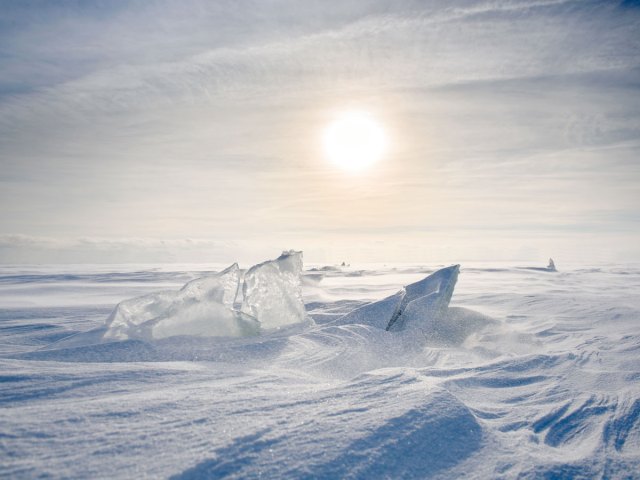
In terms of animal life at the North Pole, there are rare migrations of mammals such as polar bears and Arctic foxes, though they often stay away given the constantly shifting ice. Under the surface, though, you’re likely to find plenty of creatures such as shrimp, sea anemones, and Arctic cod. There’s also the incredible Arctic tern, a bird that performs an annual 18,641-mile-long migration between the Arctic and Antarctic each year — the longest migration of any animal on Earth.
While humans rarely pass through the North Pole, there have been a number of notable expeditions. One of the earliest to the region occurred in 1926 and was led by Roald Amundsen, Lincoln Ellsworth, and Umberto Nobile, who accessed the North Pole using a dirigible. Today, you’re likely to see humans pass through the North Pole on massive boats known as “icebreakers,” which carve through the ice and create routes for cargo and military ships to pass through.
The South Pole Is Colder Than the North Pole
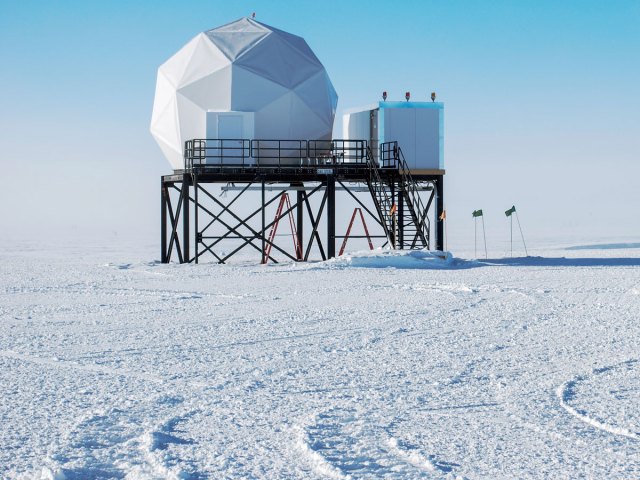
While the North Pole is largely devoid of human life, the South Pole is home to an inhabited research facility called the Amundsen-Scott South Pole Station. Between 50 and 200 individuals live and work at the facility at any given time, which has been in operation since 1956. For decades, researchers lived in an older facility that contained a 52-foot-high geodesic dome, though a newly updated station opened in 2008.
The new station is elevated above the ground and is entirely self-sufficient during the harsh winter months, when it’s harder to deliver supplies. The station contains laboratories, housing, and a greenhouse where vegetables are grown in a nutrient solution instead of soil. The entire complex is powered by three generators running on jet fuel.
The South Pole is located on the continent of Antarctica on a bed of ice that’s approximately 9,000 feet thick. This thickness makes the South Pole sit at a higher elevation than the North Pole, which also leads to colder temperatures. The warmest temperature ever recorded at the South Pole is 9.9 degrees Fahrenheit, while the coldest temperature was -117 degrees. Like the North Pole, the South Pole also experiences six months of complete daylight plus six months of total darkness annually.
The Location of the South Pole Changes Every Year
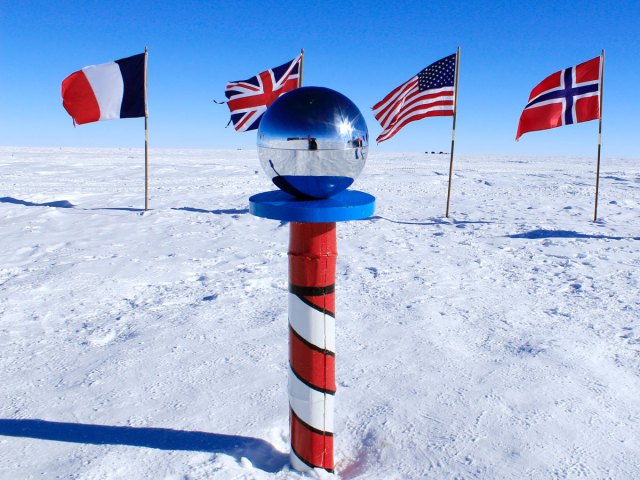
Several ceremonial poles are found throughout the region, as the exact location of Earth’s southernmost point shifts about 30 feet each year due to the moving ice. Every year on January 1, a new pole is unveiled to commemorate this updated location, in a tradition that’s occurred since 1959.
One of the South Pole’s notable landmarks is a ceremonial pole located a few hundred feet away from the Amundsen-Scott South Pole Station. This tiny red-and-white post is surrounded by the national flags of the 12 countries that signed the original Antarctic Treaty (Argentina, Australia, Belgium, Chile, France, Japan, New Zealand, Norway, South Africa, the Soviet Union, the United Kingdom, and the United States). It’s also an integral aspect of joining a bizarre local tradition: the 300 Club. On days where temperatures drop below -100 degrees Fahrenheit, scientists looking to join the 300 Club spend time in a 200-degree sauna before running outside completely naked, doing a lap around the pole, and returning to the sauna where they’re awarded with a ceremonial patch.
More from our network
Daily Passport is part of Inbox Studio, which publishes content that uplifts, informs, and inspires.






